Abstract
Cells of Escherichia coli mounted on a hydrophobic filter membrane were dried under various vapor pressures. A mutant defective in deoxyribonucleic acid repair (uvrA recA) was more sensitive to drying at a water activity of 0.53 or below than the parent strain but not at a water activity of 0.75 and above. Sucrose gradient studies showed that single- and double-strand breaks of deoxyribonucleic acid occurred at a water activity of 0.53 or below, but no breaks could be observed at a water activity of 0.75 or above. These results were observed in all cells rehydrated with 0.03 M tris (hydroxymethyl) aminomethane-hydrocholoride buffer solution at 0 or 37 degrees C, in the presence or absence of oxygen, with saturated water vapor or with a hypertonic solution followed by a gradual dilution. Freezable water was detected in the cells only at a water activity above 0.75 by differential scanning calorimetry. Removal of unfreezable water of cells in the drying, therfore, might induce deoxyribonucleic acid strand breaks.
Full text
PDF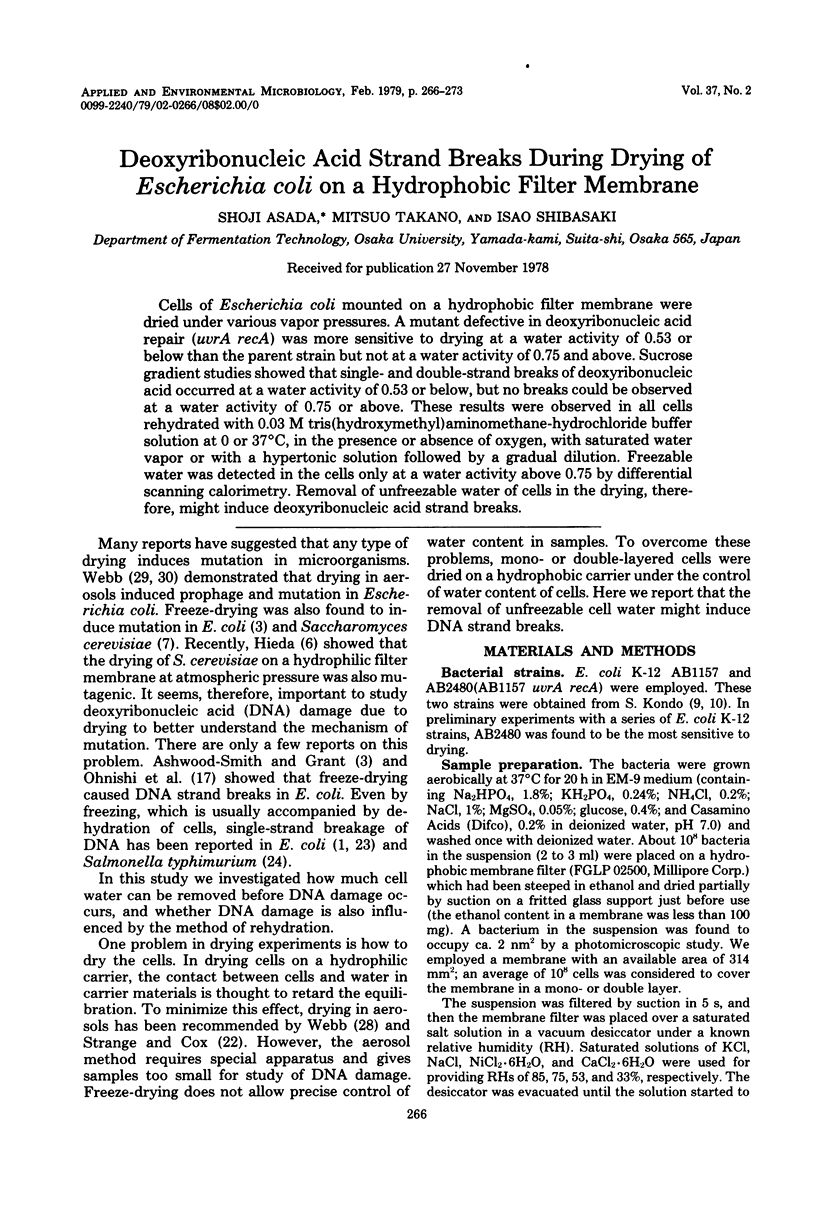
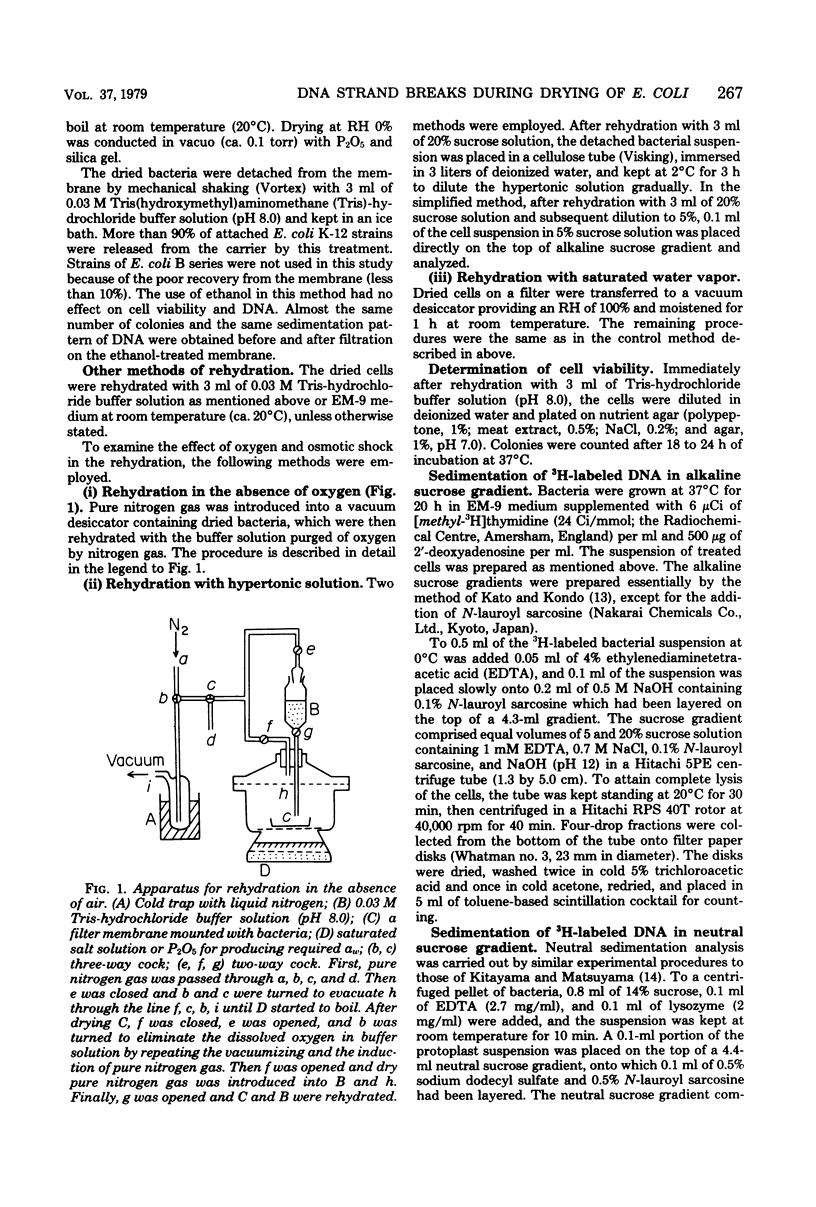
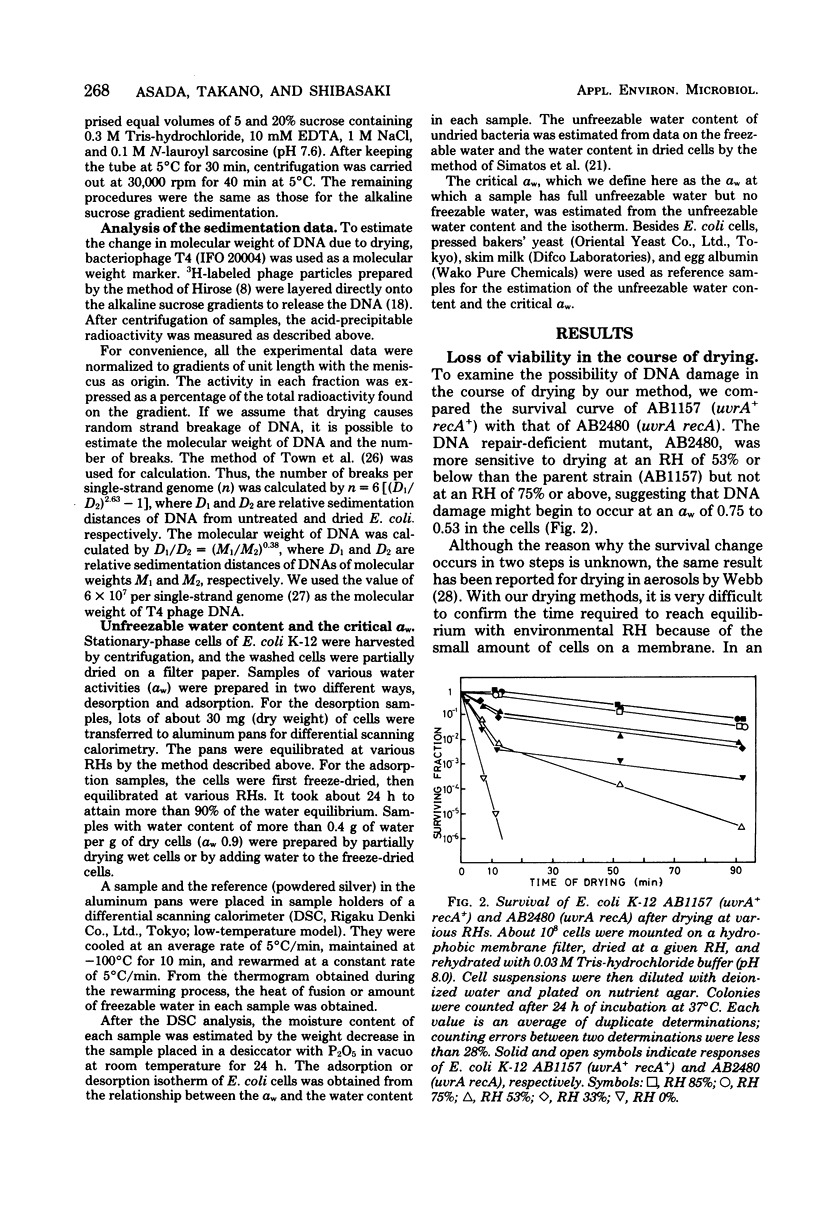
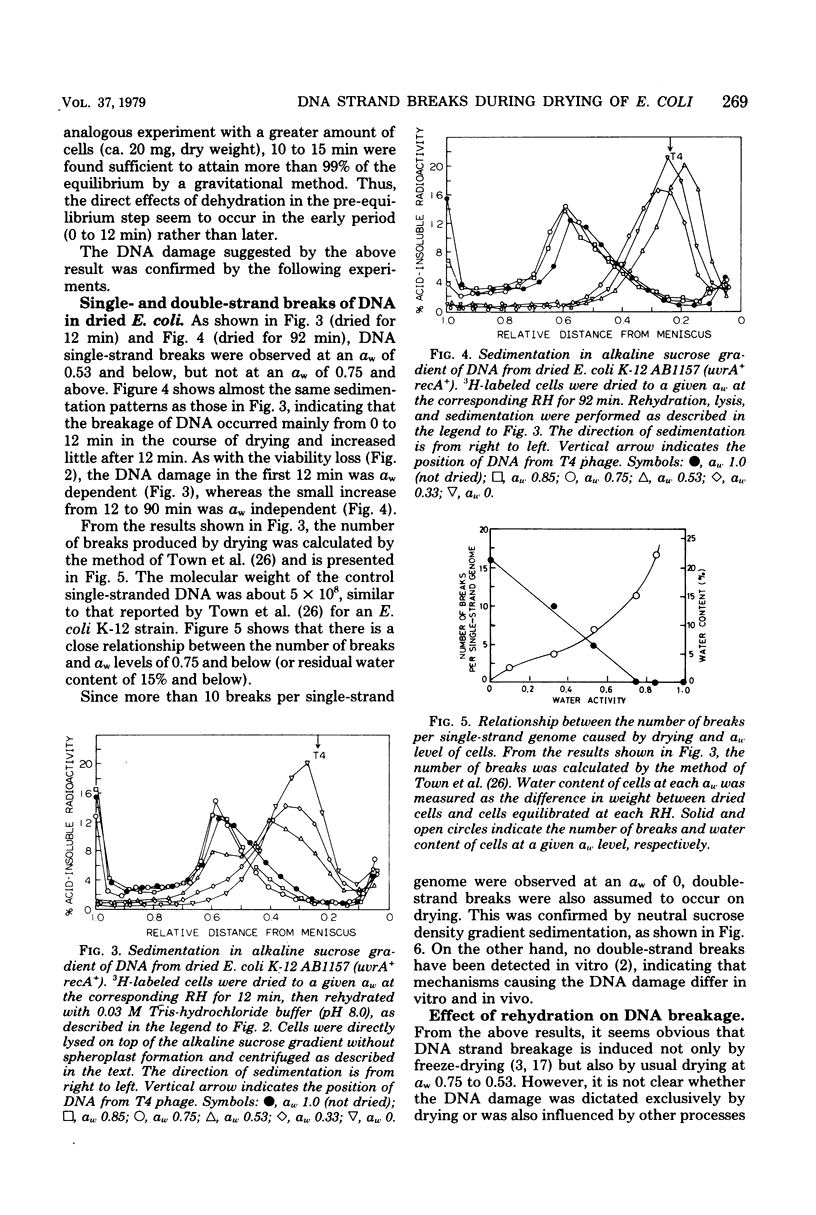
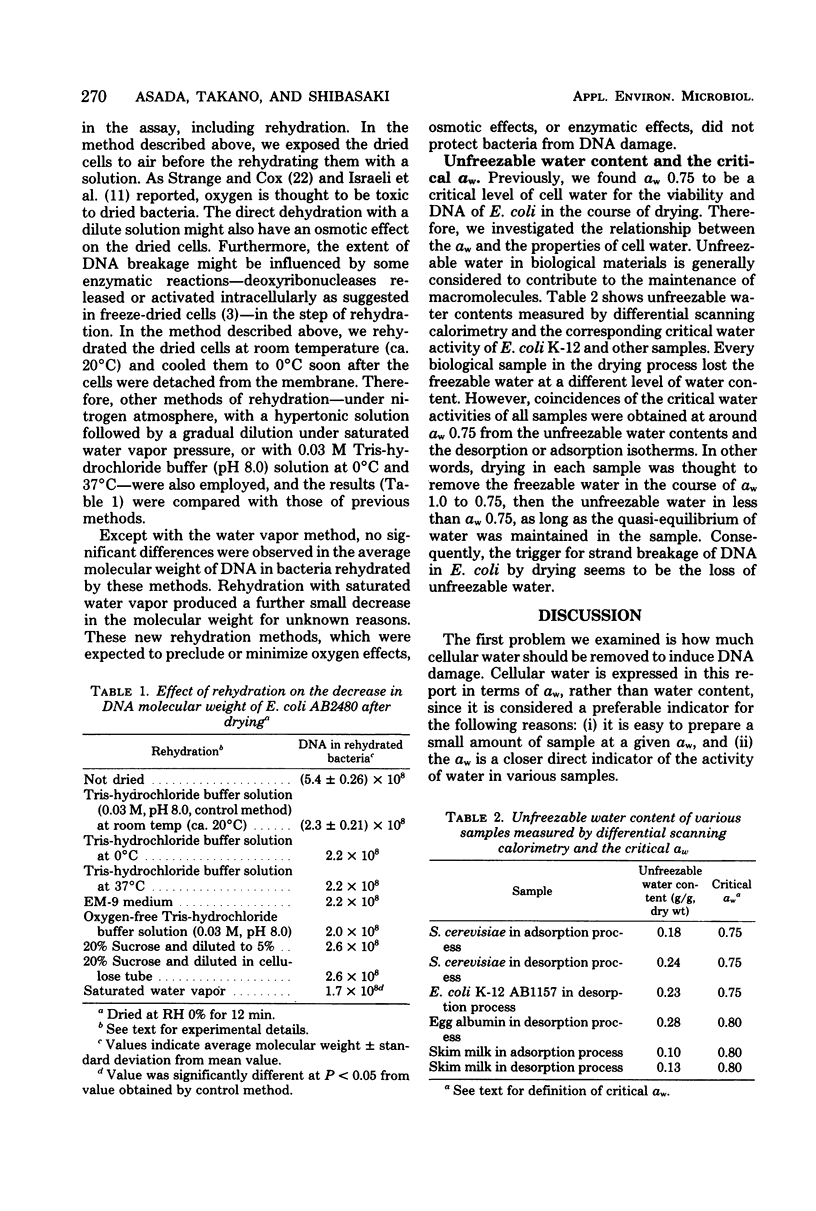
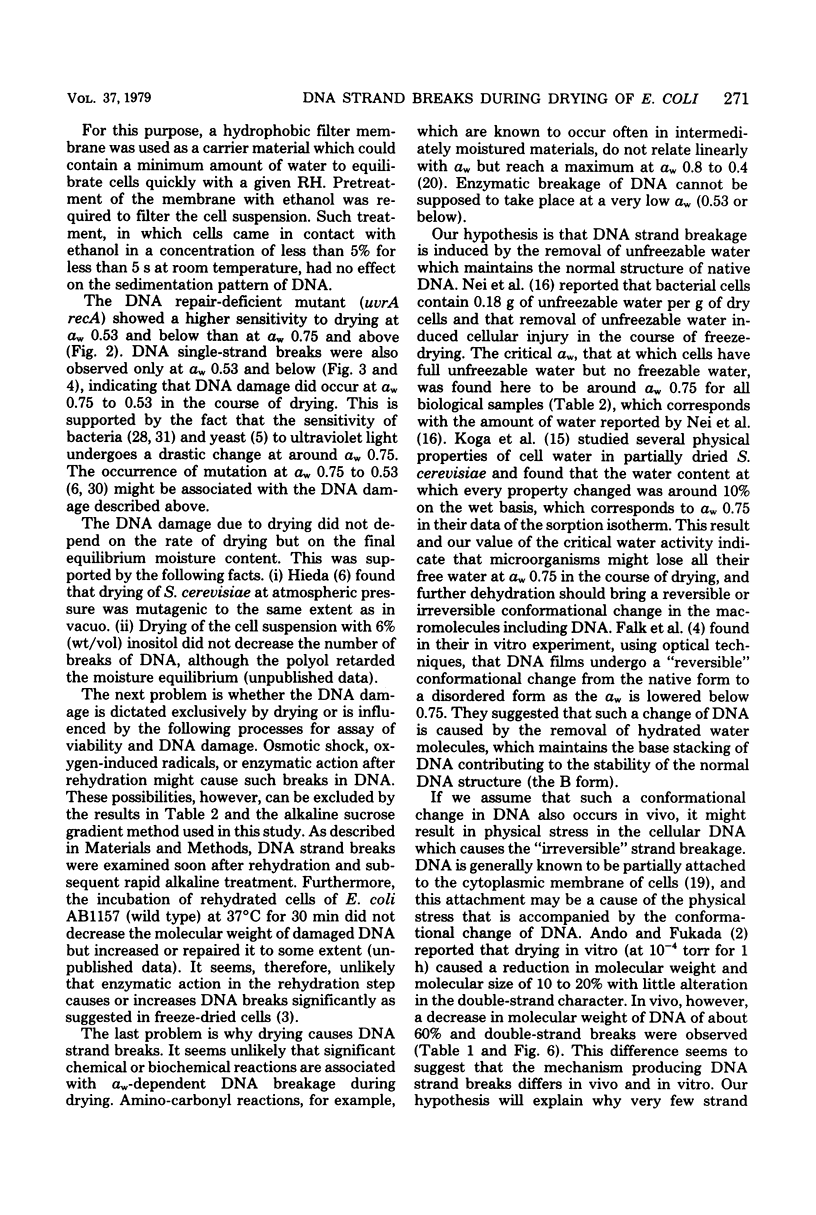
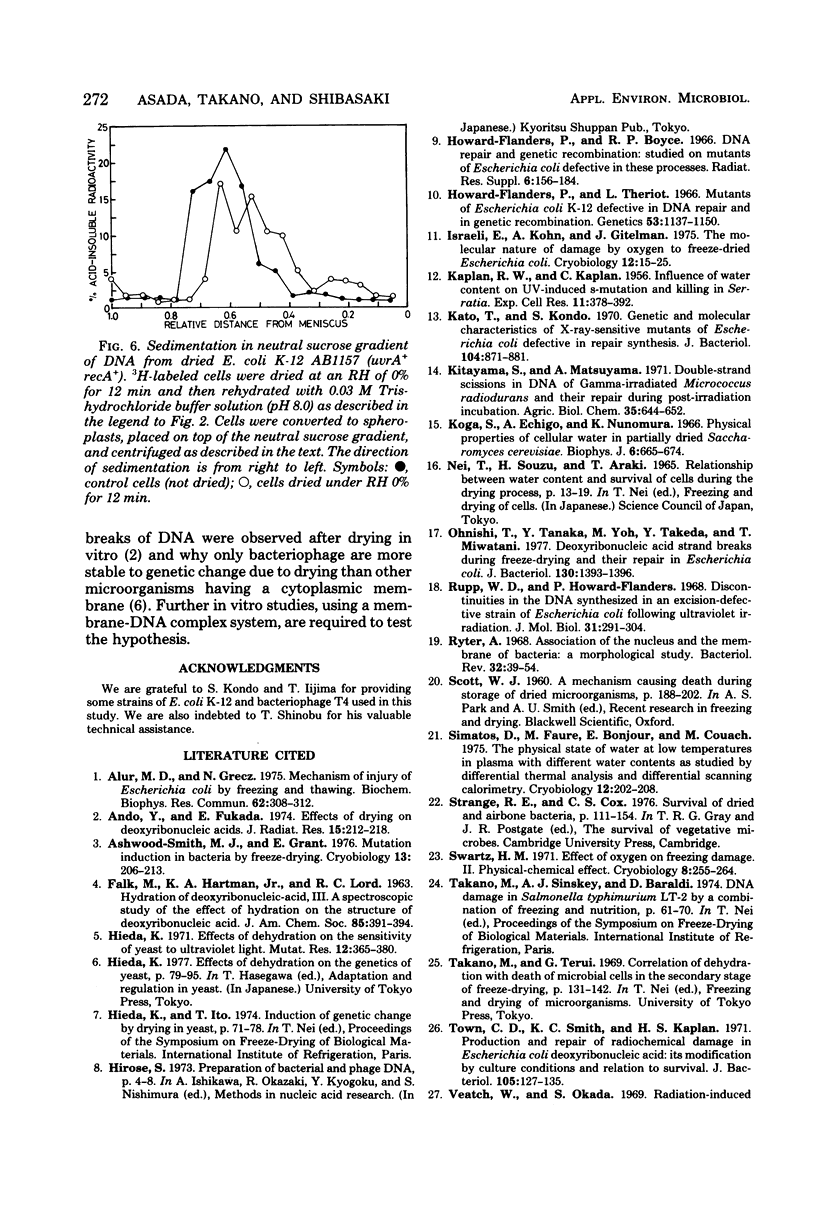
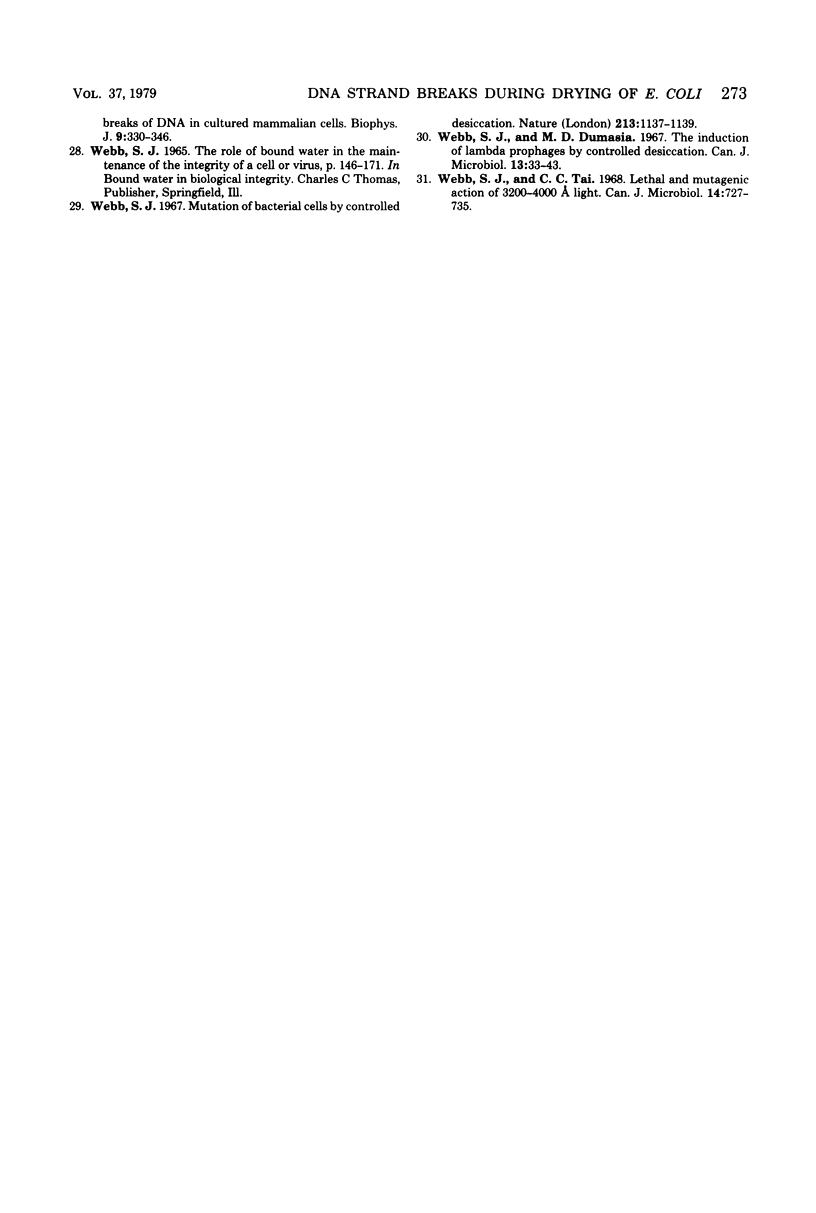
Selected References
These references are in PubMed. This may not be the complete list of references from this article.
- Alur M. D., Grecz N. Mechanism of injury of Escherichia coli by freezing and thawing. Biochem Biophys Res Commun. 1975 Jan 20;62(2):308–312. doi: 10.1016/s0006-291x(75)80139-2. [DOI] [PubMed] [Google Scholar]
- Ando Y., Fukada E. Effects of drying on deoxyribonucleic acids. J Radiat Res. 1974 Dec;15(4):212–218. doi: 10.1269/jrr.15.212. [DOI] [PubMed] [Google Scholar]
- Ashwood-Smith M. J., Grant E. Mutation induction in bacteria by freeze-drying. Cryobiology. 1976 Apr;13(2):206–213. doi: 10.1016/0011-2240(76)90134-6. [DOI] [PubMed] [Google Scholar]
- Howard-Flanders P., Boyce R. P. DNA repair and genetic recombination: studies on mutants of Escherichia coli defective in these processes. Radiat Res. 1966;(Suppl):156+–156+. [PubMed] [Google Scholar]
- Howard-Flanders P., Theriot L. Mutants of Escherichia coli K-12 defective in DNA repair and in genetic recombination. Genetics. 1966 Jun;53(6):1137–1150. doi: 10.1093/genetics/53.6.1137. [DOI] [PMC free article] [PubMed] [Google Scholar]
- Israeli E., Kohn A., Gitelman J. The molecular nature of damage by oxygen to freeze-dried Escherichia coli. Cryobiology. 1975 Feb;12(1):15–25. doi: 10.1016/0011-2240(75)90037-1. [DOI] [PubMed] [Google Scholar]
- KAPLAN C., KAPLAN R. W. Influence of water content on uv-induced s-mutation and killing in Serratia. Exp Cell Res. 1956 Aug;11(2):378–392. doi: 10.1016/0014-4827(56)90114-8. [DOI] [PubMed] [Google Scholar]
- Kato T., Kondo S. Genetic and molecular characteristics of X-ray-sensitive mutants of Escherichia coli defective in repair synthesis. J Bacteriol. 1970 Nov;104(2):871–881. doi: 10.1128/jb.104.2.871-881.1970. [DOI] [PMC free article] [PubMed] [Google Scholar]
- Koga S., Echigo A., Nunomura K. Physical properties of cell water in partially dried Saccharomyces cerevisiae. Biophys J. 1966 Sep;6(5):665–674. doi: 10.1016/S0006-3495(66)86685-7. [DOI] [PMC free article] [PubMed] [Google Scholar]
- Ohnishi T., Tanaka Y., Yoh M., Takeda Y., Miwatani T. Deoxyribonucleic acid strand breaks during freeze-drying and their repair in Escherichia coli. J Bacteriol. 1977 Jun;130(3):1393–1396. doi: 10.1128/jb.130.3.1393-1396.1977. [DOI] [PMC free article] [PubMed] [Google Scholar]
- Rupp W. D., Howard-Flanders P. Discontinuities in the DNA synthesized in an excision-defective strain of Escherichia coli following ultraviolet irradiation. J Mol Biol. 1968 Jan 28;31(2):291–304. doi: 10.1016/0022-2836(68)90445-2. [DOI] [PubMed] [Google Scholar]
- Ryter A. Association of the nucleus and the membrane of bacteria: a morphological study. Bacteriol Rev. 1968 Mar;32(1):39–54. doi: 10.1128/br.32.1.39-54.1968. [DOI] [PMC free article] [PubMed] [Google Scholar]
- Simatos D., Faure M., Bonjour E., Couach M. The physical state of water at low temperatures in plasma with different water contents as studied by differential thermal analysis and differential scanning calorimetry. Cryobiology. 1975 Jun;12(3):202–208. doi: 10.1016/0011-2240(75)90018-8. [DOI] [PubMed] [Google Scholar]
- Swartz H. M. Effect of oxygen on freezing damage. II. Physical-chemical effects. Cryobiology. 1971 Jun;8(3):255–264. doi: 10.1016/0011-2240(71)90048-4. [DOI] [PubMed] [Google Scholar]
- Town C. D., Smith K. C., Kaplan H. S. Production and repair of radiochemical damage in Escherichia coli deoxyribonucleic acid; its modification by culture conditions and relation to survival. J Bacteriol. 1971 Jan;105(1):127–135. doi: 10.1128/jb.105.1.127-135.1971. [DOI] [PMC free article] [PubMed] [Google Scholar]
- Veatch W., Okada S. Radiation-induced breaks of DNA in cultured mammalian cells. Biophys J. 1969 Mar;9(3):330–346. doi: 10.1016/S0006-3495(69)86390-3. [DOI] [PMC free article] [PubMed] [Google Scholar]
- Webb S. J., Tai C. C. Lethal and mutagenic action of 3200-4000 A light. Can J Microbiol. 1968 Jun;14(6):727–735. doi: 10.1139/m68-121. [DOI] [PubMed] [Google Scholar]


